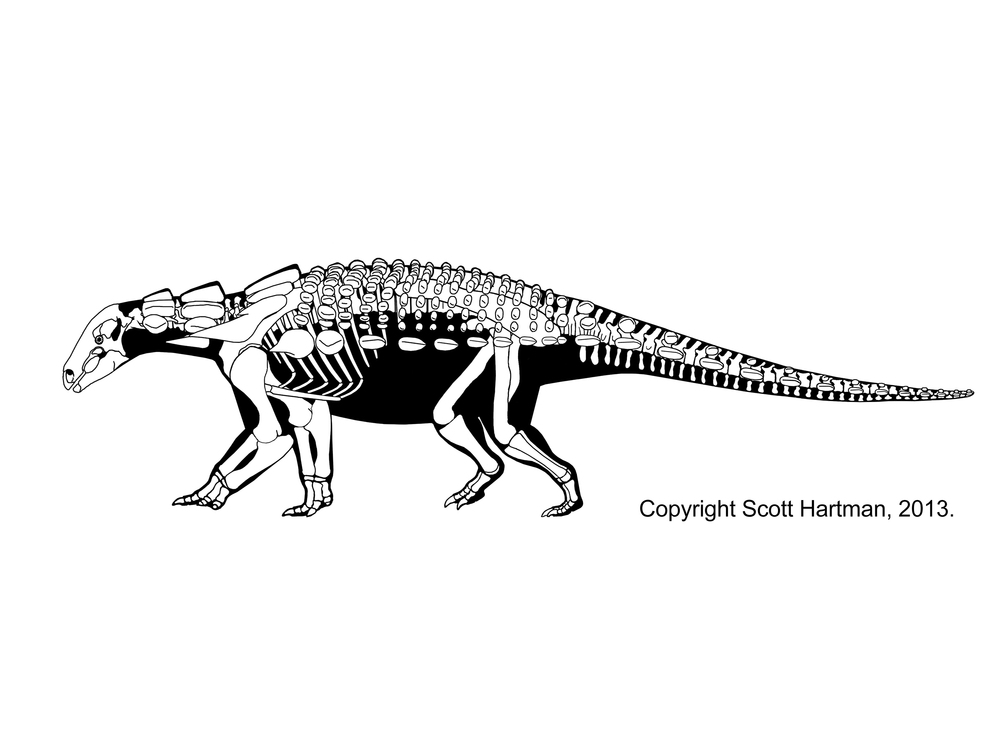Post by Vodmeister on Oct 3, 2013 8:58:45 GMT 5
Edmontonia

Edmontonia was an armoured dinosaur, a part of the nodosaur family from the Late Cretaceous Period. It is named after the Edmonton Formation (now the Horseshoe Canyon Formation), the unit of rock it was found in.
Edmontonia was bulky and tank-like at roughly 6.6 m (22 ft) long and 2 m (6.5 ft) high. It had small, ridged bony plates on its back and head and many sharp spikes along its back and tail. The four largest spikes jutted out from the shoulders on each side, two of which were split into subspines in some specimens. Its skull had a pear-like shape when viewed from above. (Compare 26 feet long and 8 feet high for the M1 Abrams army tank.)
The large spikes were probably used between males in contests of strength to defend territory or gain mates. The spikes would also have been useful for intimidating predators or rival males, protection, or for self-defense. To protect itself from predators, an Edmontonia might have crouched down on the ground to minimize the possibility of attack to its defenseless underbelly.
Rings in the petrified wood of trees contemporary with Edmontonia show evidence of strong seasonal changes in precipitation and temperature; this may hold an explanation for why so many specimens have been found with their armor plating and spikes in the same position they were in life. The Edmontonia could have died due to drought, dried up, and then rapidly became covered in sediment whenthe rainy season began.

Edmontonia was an armoured dinosaur, a part of the nodosaur family from the Late Cretaceous Period. It is named after the Edmonton Formation (now the Horseshoe Canyon Formation), the unit of rock it was found in.
Edmontonia was bulky and tank-like at roughly 6.6 m (22 ft) long and 2 m (6.5 ft) high. It had small, ridged bony plates on its back and head and many sharp spikes along its back and tail. The four largest spikes jutted out from the shoulders on each side, two of which were split into subspines in some specimens. Its skull had a pear-like shape when viewed from above. (Compare 26 feet long and 8 feet high for the M1 Abrams army tank.)
The large spikes were probably used between males in contests of strength to defend territory or gain mates. The spikes would also have been useful for intimidating predators or rival males, protection, or for self-defense. To protect itself from predators, an Edmontonia might have crouched down on the ground to minimize the possibility of attack to its defenseless underbelly.
Rings in the petrified wood of trees contemporary with Edmontonia show evidence of strong seasonal changes in precipitation and temperature; this may hold an explanation for why so many specimens have been found with their armor plating and spikes in the same position they were in life. The Edmontonia could have died due to drought, dried up, and then rapidly became covered in sediment whenthe rainy season began.










